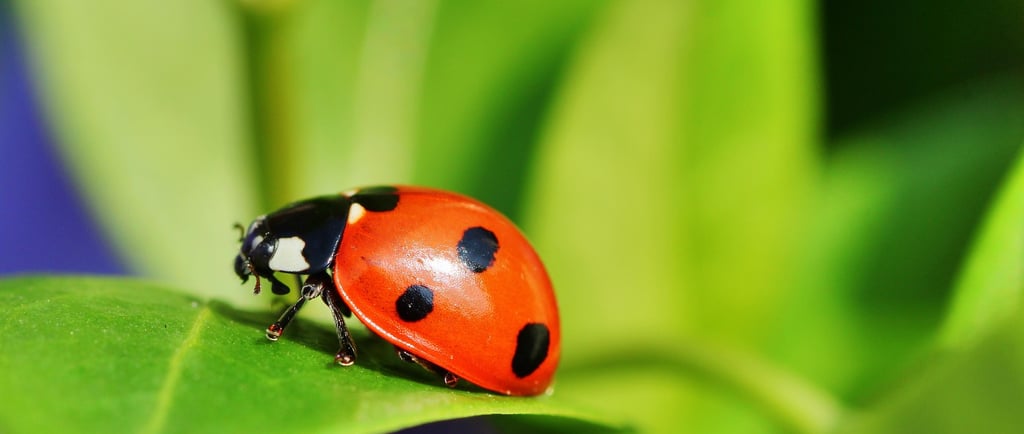🌿The Little Gardener in Red 🐞 The Ladybug
🐞 A follow-up story that build bridge between the Chapters Zoology – Introducing the Animals and Ecology in the Biology Album. 🌿✨ The Little Gardener in Red invites children to explore the secret life of one of nature’s tiniest protectors of the crops—the ladybug—and her vital role in balancing life in the garden. 🪲🌱 This story builds upon earlier presentations of the invertebrates, introducing the ladybug as a beetle with elytra, undergoing complete metamorphosis, and acting as a predator in her ecosystem. It also gently reinforces the concept of adaptation through her aposematic coloration and her incredible life cycle. This story opens a joyful path toward observing real insects, comparing their body structures, exploring life cycles across the animal kingdom, and tracing the invisible threads that link insect roles, plant survival, and ecological interdependence. It invites children to wonder: “What other tiny creatures help take care of the garden… and how do they do it?” 🐜🕷️💭
BIOLOGY STORIES
4/24/20253 min read


Once we welcome the spring equinox, everything begins to change in the Northern Hemisphere. 🌞 It’s like all the plants are waking up from a long winter sleep. But do you know who else is waking up?(Pause and invite children to share!)
Bugs are waking up from their winter sleep too. ❄️🪲Imagine them curled under leaves or tucked in tree bark, waiting for the world to warm. And now—ta-da!—here they come, crawling and buzzing, gleaming like shiny jewels in the sunlight. 💎☀️Among them is one tiny traveler that always brings smiles: a bug that’s not a bug at all. The name of this mysterious beetle goes back hundreds of years…
During the Middle Ages in Europe, farmers were desperate to protect their crops from pests—especially tiny sap-sucking insects like aphids. Without modern tools or pesticides, they turned to prayer and faith. They asked for help from “Our Lady,” a title for the Virgin Mary, believed to be a protector of the humble and the harvest. 🙏🌾
And then… help arrived, flocks of small red-dotted beetles appeared in the fields. They devoured the aphids, and the crops were saved. Grateful and astonished, the farmers called them “Our Lady’s Beetles.” which became ladybird in Britain and ladybug in North America. 🕊️🌾 In many languages, the name still reflects this devotion. For example in German: Marienkäfer – literally “Mary’s beetle” and in French the name means “the good God’s little beast” la bête à bon Dieu.🪲✨
She may be small, but she wears a suit of shining armor. That round red shell on her back is called the elytra 👏 e 👏 ly 👏 tra —a Greek word meaning “covering.”It’s not just a decoration—it protects the delicate wings folded underneath. When she’s ready to zoom into action, the elytra lift like tiny red suitcases, and her real wings unfold. Whoosh! Off she goes! ✈️🌼
Look at her black spots. How many can you count? 🧐⚫ Each species of ladybug has its own number and pattern. Some have seven, some twenty-two… and recently, you might have spotted a black ladybug with just two red spots! 😲🪲 Not all ladybugs are red with black dots—some are orange, yellow, even black with red! 🎨🌈 And while people used to think these spots told her age, scientists now believe they’re a warning sign—“Don’t eat me!” Her bright elytra and bold spots are part of a special survival trick called aposematic coloration 👏 a 👏 po 👏 se 👏 ma 👏 tic. The word comes from the Greek meaning “away sign”. So it literally means: “a warning sign to stay away.” 🛑🐞 It’s an adaptation—a change that helps her survive in her environment. Instead of hiding, she warns her predators. “I taste bad. I might make you sick. Try someone else!”
Ladybugs truly are gardener’s best friend, because they LOVE to eat aphids! 🌿 One ladybug can eat up to 5,000 aphids in her lifetime! That’s a true garden guardian. 🌱🛡️ But before she becomes the spotted beetle we know, she’s a teeny alien-looking larva—a word that means “mask” in Latin. She looks nothing like a ladybug yet, but she has a BIG appetite. She munches and munches, growing bigger each day. Then, one day, she attaches herself to a leaf and spins into a golden shell. This is the pupa stage—pupa means “doll” in Latin, because she stays very still, like a puppet in a quiet theater. 🎭
Inside, something amazing is happening. Her whole body is rearranging itself. And after a few days—ta-da again!—she emerges, soft and orange, with wings that slowly harden and turn red. This process is called metamorphosis, from the Greek words meta (change) and morphē (form)—a complete change of form, just like butterflies! 🐛➡️🐞 And if you think that there's nothing else to surprise you wait to hear what stories people tell about ladybugs around the world.
In Sweden, people once believed that if a ladybug landed on a young woman’s hand, she should watch the direction it flew—because it was flying toward her future husband! 💞💨 In Switzerland, it was said that ladybugs brought babiesto families who wished for children—just like storks in other stories. 👶🕊️
And in many places across Europe, farmers believed that harming a ladybug would bring bad luck, because she was sent by Our Lady to protect their crops. 🌾🪲 That’s why even today, when a ladybug lands on you, people often whisper a wish… and watch her fly away. 🌠🐞
Here's something I'm puzzled about. When I was watching the other day one lady bug I noticed that her spots are perfectly mirrored on both sides of her elytra. Ladybugs have bilateral symmetry—bi meaning “two,” and lateral meaning “side.” Nature truly loves balance! ⚫🟰⚫ But is this always true?
Let’s go out and be ladybug detectives! 🔍🐞🧭
How many kinds of ladybugs can we find? 💭
I wonder… Are they native or invasive? How can we tell? 🌍
• Which other insects have elytra? 🪲
• Do all beetles pass through metamorphosis? 🧐
• Can we spot other insects in the garden that use aposematic coloration to warn predators?
• Do all lady bugs have spots that are perfectly mirrored on both sides?
With Montessori joy,
Vanina 😊

